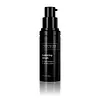What's inside
What's inside
 Key Ingredients
Key Ingredients

 Benefits
Benefits

 Concerns
Concerns

No concerns
 Ingredients Side-by-side
Ingredients Side-by-side

Water
Skin ConditioningEthoxydiglycol
Humectant3-O-Ethyl Ascorbic Acid
Skin ConditioningGlycerin
HumectantPropylene Glycol
HumectantTocopheryl Acetate
AntioxidantSodium Hyaluronate
HumectantPunica Granatum Extract
AstringentButylene Glycol
HumectantCoceth-7
EmulsifyingPPG-1-PEG-9 Lauryl Glycol Ether
EmulsifyingPEG-40 Hydrogenated Castor Oil
EmulsifyingDisodium EDTA
Caprylyl Glycol
EmollientEthylhexylglycerin
Skin ConditioningPhenoxyethanol
PreservativeParfum
MaskingWater, Ethoxydiglycol, 3-O-Ethyl Ascorbic Acid, Glycerin, Propylene Glycol, Tocopheryl Acetate, Sodium Hyaluronate, Punica Granatum Extract, Butylene Glycol, Coceth-7, PPG-1-PEG-9 Lauryl Glycol Ether, PEG-40 Hydrogenated Castor Oil, Disodium EDTA, Caprylyl Glycol, Ethylhexylglycerin, Phenoxyethanol, Parfum
Water
Skin ConditioningGlycerin
HumectantBiosaccharide Gum-1
HumectantSodium Hyaluronate
HumectantPalmitoyl Tripeptide-5
Skin ConditioningChondrus Crispus Extract
Skin ConditioningGlyceryl Polyacrylate
Honey
HumectantHydrolyzed Hazelnut Protein
Skin ConditioningPunica Granatum Extract
AstringentTocopheryl Acetate
AntioxidantMacrocystis Pyrifera Extract
Skin ConditioningCitrullus Lanatus Fruit Extract
Skin ConditioningLens Esculenta Fruit Extract
Skin ConditioningPyrus Malus Fruit Extract
Skin ConditioningButylene Glycol
HumectantSodium Lactate
BufferingSodium PCA
HumectantPolysorbate 20
EmulsifyingLeuconostoc/Radish Root Ferment Filtrate
AntimicrobialEthylhexylglycerin
Skin ConditioningSodium Polyacrylate
AbsorbentPhenoxyethanol
PreservativeCitric Acid
BufferingWater, Glycerin, Biosaccharide Gum-1, Sodium Hyaluronate, Palmitoyl Tripeptide-5, Chondrus Crispus Extract, Glyceryl Polyacrylate, Honey, Hydrolyzed Hazelnut Protein, Punica Granatum Extract, Tocopheryl Acetate, Macrocystis Pyrifera Extract, Citrullus Lanatus Fruit Extract, Lens Esculenta Fruit Extract, Pyrus Malus Fruit Extract, Butylene Glycol, Sodium Lactate, Sodium PCA, Polysorbate 20, Leuconostoc/Radish Root Ferment Filtrate, Ethylhexylglycerin, Sodium Polyacrylate, Phenoxyethanol, Citric Acid
Ingredients Explained
These ingredients are found in both products.
Ingredients higher up in an ingredient list are typically present in a larger amount.
Butylene Glycol (or BG) is used within cosmetic products for a few different reasons:
Overall, Butylene Glycol is a safe and well-rounded ingredient that works well with other ingredients.
Though this ingredient works well with most skin types, some people with sensitive skin may experience a reaction such as allergic rashes, closed comedones, or itchiness.
Learn more about Butylene GlycolEthylhexylglycerin (we can't pronounce this either) is commonly used as a preservative and skin softener. It is derived from glyceryl.
You might see Ethylhexylglycerin often paired with other preservatives such as phenoxyethanol. Ethylhexylglycerin has been found to increase the effectiveness of these other preservatives.
Glycerin is already naturally found in your skin. It helps moisturize and protect your skin.
A study from 2016 found glycerin to be more effective as a humectant than AHAs and hyaluronic acid.
As a humectant, it helps the skin stay hydrated by pulling moisture to your skin. The low molecular weight of glycerin allows it to pull moisture into the deeper layers of your skin.
Hydrated skin improves your skin barrier; Your skin barrier helps protect against irritants and bacteria.
Glycerin has also been found to have antimicrobial and antiviral properties. Due to these properties, glycerin is often used in wound and burn treatments.
In cosmetics, glycerin is usually derived from plants such as soybean or palm. However, it can also be sourced from animals, such as tallow or animal fat.
This ingredient is organic, colorless, odorless, and non-toxic.
Glycerin is the name for this ingredient in American English. British English uses Glycerol/Glycerine.
Learn more about GlycerinPhenoxyethanol is a preservative that has germicide, antimicrobial, and aromatic properties. Studies show that phenoxyethanol can prevent microbial growth. By itself, it has a scent that is similar to that of a rose.
It's often used in formulations along with Caprylyl Glycol to preserve the shelf life of products.
Punica Granatum extract comes from the pomegranate fruit.
Pomegranates are rich in fatty acids, including an unsaturated fatty acid by the name of Punicic acid. Other components of pomegranates include Vitamin E, and Vitamin C.
As an astringent, Punica Granatum Extract shrinks tissue by drawing water out of your skin. This leads to a tightening effect in the skin.
Learn more about Punica Granatum ExtractSodium Hyaluronate is hyaluronic acid's salt form. It is commonly derived from the sodium salt of hyaluronic acid.
Like hyaluronic acid, it is great at holding water and acts as a humectant. This makes it a great skin hydrating ingredient.
Sodium Hyaluronate is naturally occurring in our bodies and is mostly found in eye fluid and joints.
These are some other common types of Hyaluronic Acid:
Learn more about Sodium HyaluronateTocopheryl Acetate is AKA Vitamin E. It is an antioxidant and protects your skin from free radicals. Free radicals damage the skin by breaking down collagen.
One study found using Tocopheryl Acetate with Vitamin C decreased the number of sunburned cells.
Tocopheryl Acetate is commonly found in both skincare and dietary supplements.
Learn more about Tocopheryl AcetateWater. It's the most common cosmetic ingredient of all. You'll usually see it at the top of ingredient lists, meaning that it makes up the largest part of the product.
So why is it so popular? Water most often acts as a solvent - this means that it helps dissolve other ingredients into the formulation.
You'll also recognize water as that liquid we all need to stay alive. If you see this, drink a glass of water. Stay hydrated!
Learn more about Water